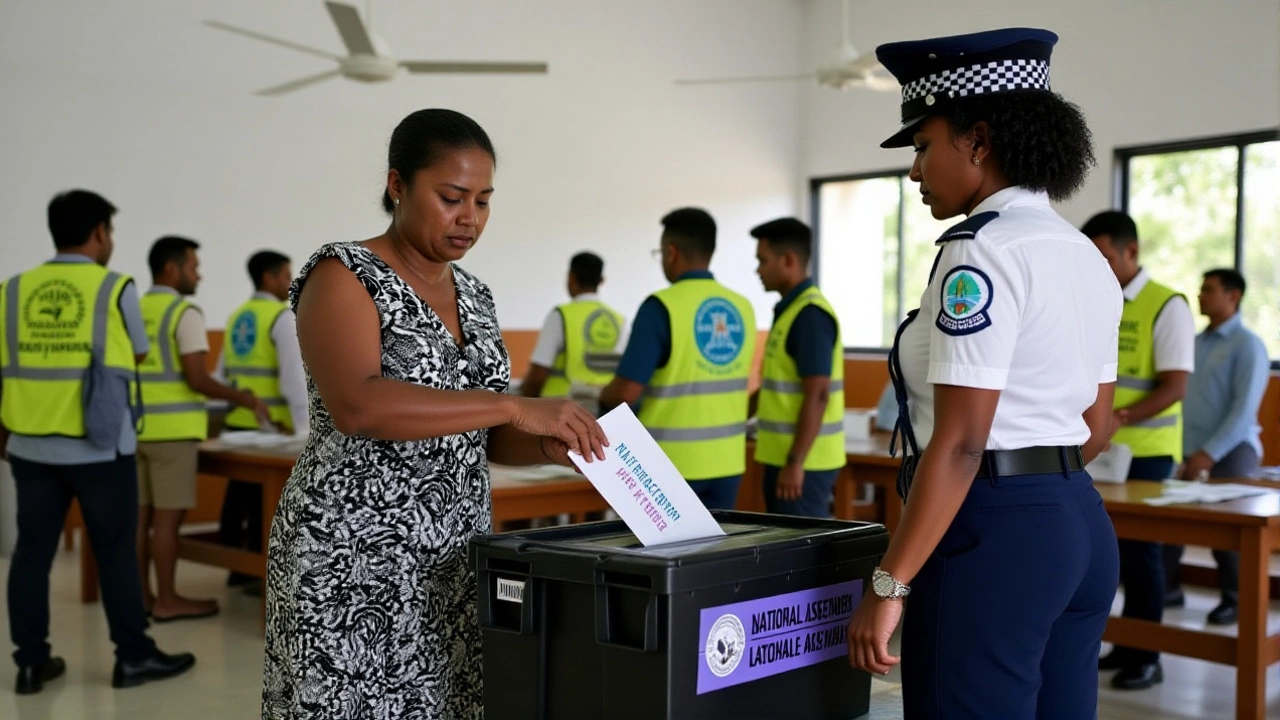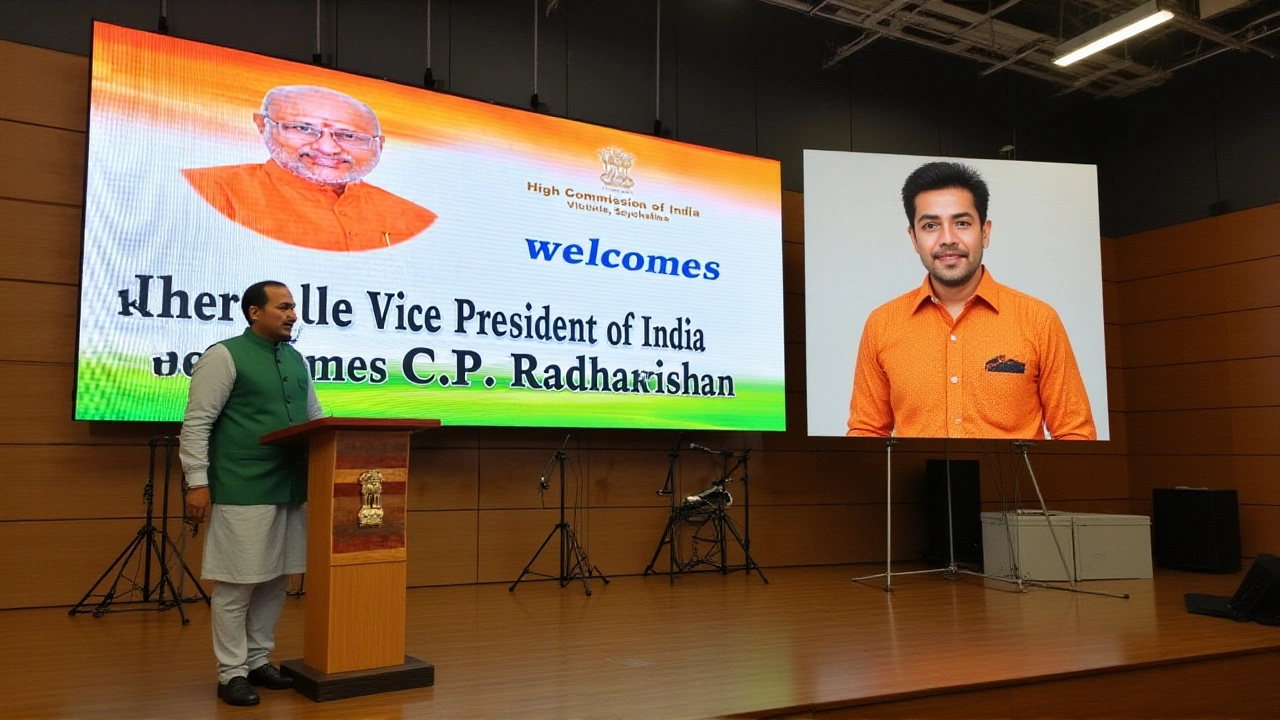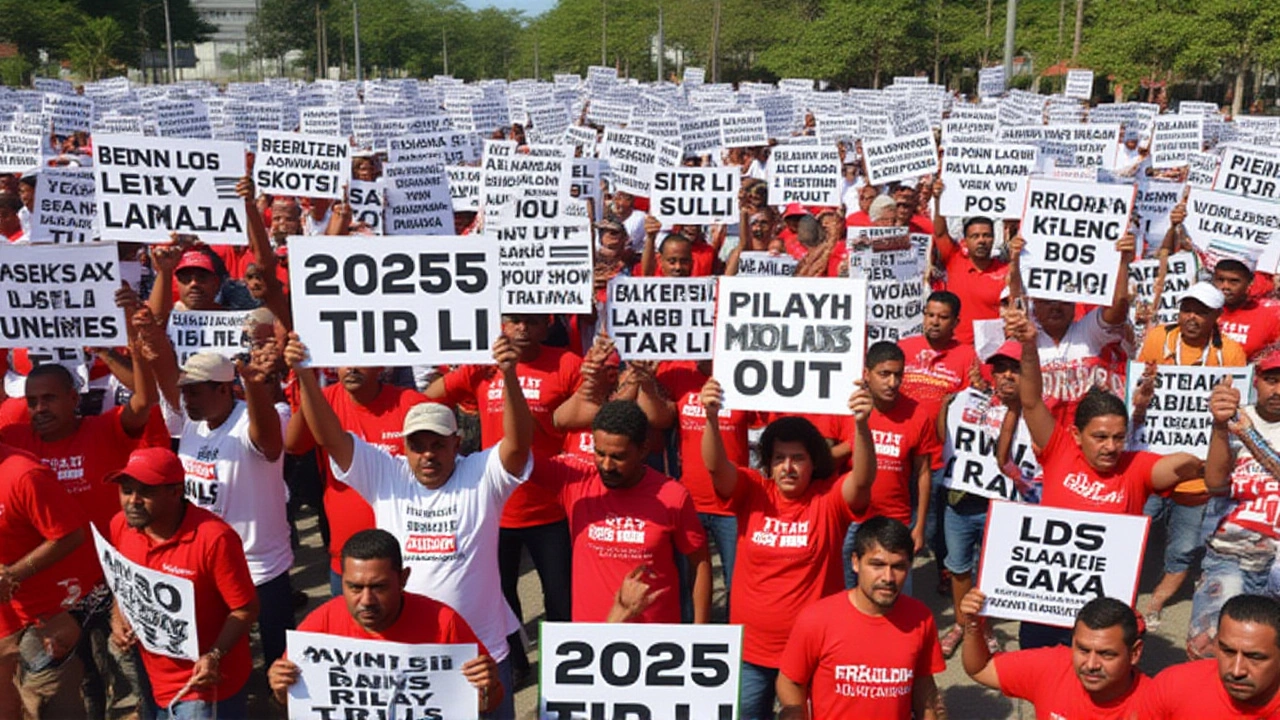When Patrick Herminie took the oath as Seychelles’ sixth president on October 14, 2025, he didn’t just win an election—he sealed a quiet revolution. The former opposition leader, running under the United Seychelles Party, defeated incumbent Wavel Ramkalawan with 52.7% of the vote in the runoff, ending a single term that began with high hopes but ended with voter fatigue. The results, certified by the Electoral Commission of Seychelles on October 12, confirmed what polls had hinted at: the people of Seychelles had chosen change, not chaos. And remarkably, they did it without protests, without violence, and without a single credible allegation of fraud.
A Peaceful Handover in a Region Often Marked by Turmoil
In a part of the world where power transitions are sometimes settled by coups or constitutional crises, the meeting between Ramkalawan and Herminie at State House in Victoria on October 14 stood out. Ramkalawan, a former Anglican priest who first ran for president in 1998, didn’t just concede—he embraced the moment. "I pledge an orderly and dignified transfer of power," he said, his voice steady, his posture calm. Herminie, a seasoned legislator and former Speaker of the National Assembly, responded with equal gravity: "This is not about winners and losers. It’s about Seychelles." The symbolism wasn’t lost on regional observers. While neighboring nations in East Africa and the Indian Ocean have seen leaders cling to power through amended constitutions or delayed elections, Seychelles just completed its second peaceful transfer of presidential power since multiparty democracy took root in 1993. And this time, it wasn’t just the presidency that changed hands.United Seychelles Reclaims the Legislature—And the Nation
The real story wasn’t just in the presidential numbers. On September 27, 2025, during the broader general election, United Seychelles Party won 22 of the 36 seats in the National Assembly, securing a solid majority. That’s the first time since 2020 that the party has controlled both the executive and legislative branches. In contrast, Ramkalawan’s Linyon Demokratik Seselwa coalition, which swept to power in 2020 promising transparency and social protection, was reduced to just 12 seats. The shift wasn’t random. Voter sentiment, analyzed by Africanews and local polling firms, pointed to a deepening frustration with the cost of living, which rose 18% since 2020, and a growing sense that basic freedoms were being eroded. "People have had enough," said Dr. Nadia Alphonse, a political scientist at the University of Seychelles. "It wasn’t about personality. It was about performance. Ramkalawan started as a reformer. He ended as a bureaucrat."
Climate, Drugs, and the Fragile Economy
Campaign issues were as urgent as they were local. Seychelles, an archipelago of 115 islands, is among the most vulnerable nations on Earth to rising sea levels. A 2024 UN report warned that 40% of its coastal infrastructure could be submerged by 2050 if emissions continue unchecked. Voters didn’t just hear about this—they saw it. Beach erosion in Mahé’s northern shores became a campaign backdrop. Herminie’s team ran ads showing flooded roads near the capital, while Ramkalawan’s campaign struggled to show tangible progress on climate adaptation. Then there was the drug crisis. Once known as a safe, tourist-friendly paradise, Seychelles has seen a 37% spike in cocaine seizures since 2022, according to the Seychelles Police Force. Young people, hit hard by post-pandemic job losses, are increasingly turning to substances. Tourism, which accounts for 25% of GDP, still hasn’t fully recovered from the pandemic. Hotel occupancy rates in 2024 were at 68%, down from 89% in 2019.A Legacy of Power, Then Change
To understand the 2025 result, you have to go back to 1977. That’s when France-Albert René, then prime minister, overthrew the country’s first president in a bloodless coup. For 14 years, he ruled as a socialist autocrat. Only after the Soviet Union collapsed did he reluctantly allow multiparty elections in 1991. René won the first of those in 1993—and kept winning until 2004. His party, then called the Seychelles People’s United Party, became synonymous with power. Ramkalawan’s 2020 win broke that 40-year grip. But now, after five years, the pendulum has swung back. And that’s what makes this different. This isn’t a return to the past by force. It’s a return by ballot. The United Seychelles Party didn’t stage a coup. They campaigned. They debated. They lost in 2020—and came back stronger.
What Comes Next?
Herminie’s agenda is already taking shape. He’s promised a "national resilience plan" focused on coastal protection, affordable housing, and decriminalizing small-scale drug possession to shift resources toward treatment. He also wants to reform the role of the military in policy-making—a point of contention during Ramkalawan’s term. But the bigger question is whether this marks the beginning of a new norm: alternating power between two major parties without disruption. If so, Seychelles will be one of Africa’s quiet democratic success stories. Not because it’s perfect—but because it’s learning to lose.Frequently Asked Questions
How did Patrick Herminie win after losing in 2020?
Herminie’s 2025 victory came from a combination of voter fatigue with Ramkalawan’s unmet promises and a stronger campaign focused on economic relief and climate action. In 2020, Herminie ran as a lesser-known figure; by 2025, he had built a reputation as a pragmatic legislator and positioned himself as the candidate of renewal. His party also improved its grassroots outreach, especially in outer islands where poverty and infrastructure gaps were most visible.
Why did the United Seychelles Party lose in 2020 and win again in 2025?
In 2020, voters saw United Seychelles as the party of the old guard—linked to decades of authoritarian rule under René. Ramkalawan, a moral voice and former priest, represented change. By 2025, however, the party had rebranded with younger leaders, distanced itself from its past, and focused on tangible issues like jobs and climate. Ramkalawan’s administration, meanwhile, was perceived as bureaucratic and disconnected from everyday struggles.
What role did climate change play in the election?
Climate change was a top-three issue for voters, especially among younger and coastal communities. A 2025 survey by the Seychelles Climate Observatory showed 72% of respondents considered sea-level rise an immediate threat. Herminie’s campaign ran targeted ads showing flooded roads and eroded beaches, while Ramkalawan’s administration struggled to show completed projects. The issue cut across class lines—tourism operators, fishermen, and homeowners all feared the future.
Is Seychelles’ democracy now stable?
The peaceful transfer of power between two major parties, both with deep historical roots, suggests growing institutional maturity. Unlike other African democracies where power alternation is rare or contested, Seychelles has now done it twice since 1993. The absence of violence, credible allegations of fraud, or constitutional crises this time signals that voters trust the system—even when they’re angry. That’s the hallmark of a maturing democracy.
What’s the significance of the National Assembly results?
The United Seychelles Party’s legislative majority means Herminie won’t face a gridlocked government. In 2020, Ramkalawan’s coalition held only 20 seats, forcing him to negotiate with smaller parties on every bill. Now, Herminie can push his agenda without compromise—whether it’s climate adaptation, drug policy reform, or military oversight. That’s both a strength and a risk: accountability matters more when one party controls everything.
Could this pattern repeat in future elections?
Yes—if both parties continue to evolve. The 2025 result suggests voters are now evaluating performance over legacy. If United Seychelles falters in office, and Linyon Demokratik Seselwa rebuilds its credibility, another shift is possible. The real test isn’t one election—it’s whether future voters see the ballot box as a tool for change, not just protest. So far, Seychelles is passing that test.
